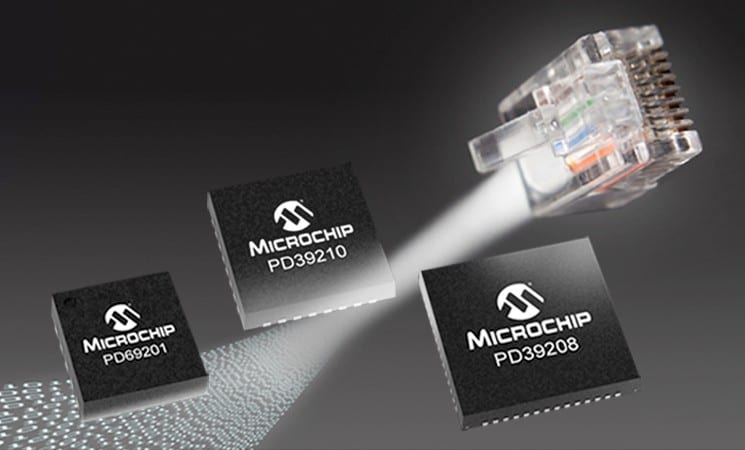New PoE PSE Chipsets for the IEEE® 802.3 at Market Segment
Microchip’s new PSE chipsets are specifically designed for the many applications of the sub 30W PoE market segment. Keep reading to learn why.
Power over Ethernet (PoE) technology eliminates the need for AC power for Ethernet connected devices. The IEEE® 802.3bt standard allows for connected devices to consume up to 90W of power. This “BT” version of the IEEE specification widens the application space to virtually any device with an Ethernet connection to be powered over the Ethernet cable. Flat-panel monitors, point-of-sale terminals and information kiosks are just a few of the latest applications to adopt PoE. However, developing products using chip sets to support the BT standard and the higher power does come at a higher cost.
The BT standard was ratified in 2018, yet the majority of the PoE devices on the market today such as Wi-Fi™ access points, security cameras and IP telephones still consume less than 30W of power. Yes, BT equipment will still power these devices, but lower cost power sourcing equipment (PSE) that supports the IEEE 802.3at standard with 30W maximum can still be deployed to power these “AT” devices — allowing IT departments to save money on PoE enabled equipment.
Microchip recently announced its new PoE PSE chip sets, specifically designed for the AT market segment. The PD69201 is a single channel PSE device while the PD39210 and PD39208 are a PoE PSE controller, plus a manager chip set that scales to support 8 to 48 channels.
The PD69201 single channel PSE device is designed for low port count applications such as SMB routers and Wi-Fi access points with port power forwarding to allow daisy-chain of the access points.
The multi-channel PD39210 plus PD39208 chip set is targeted at 8 to 48 port network switches that need 30W of PoE at each of the ports.
On the other side of the Ethernet cable away from the PSE devices sit the powered devices (PDs). These are the Wi-Fi access points, security cameras and IP telephones. Microchip completes the PoE portfolio with PD front-end ICs for these applications.
The new AT PSE chip sets are part of Microchip’s multi-Power over Ethernet (mPoE) technology. Microchip mPoE supports PoE 1, PoE 2, PoE+, IEEE 802.3af/at/bt, legacy af/at, 12.5K, UPoE, Class 4 60W and PoH standards concurrently. This versatile technology enables flexible and quick network design upgrades to address any business requirement. You get the scalability and interoperability necessary to power IoT networks, not only today but well into the future.
Visit mPoE to learn more about Microchip’s mPoE technology, PoE integrated circuits and system solutions.
